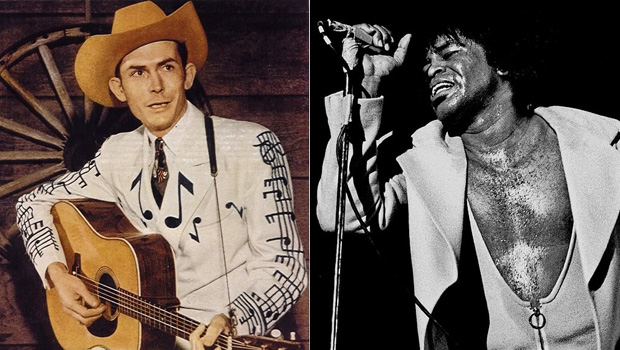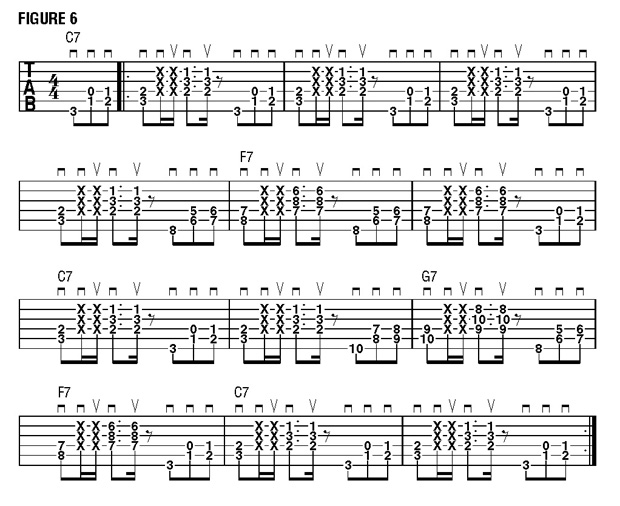Country-Funk—What Hank Williams and James Brown have in Common
A lesson in the two-beat “boom-chick” style of rhythm playing.

Most of you are probably familiar with the two-beat “boom-chick” style of rhythm playing so prevalent in classic country music. You may be surprised to learn that the groove that drives, say, Hank Williams’s “Your Cheatin’ Heart” is not that far removed from the one that drives a funk song like the James Brown instrumental “Night Train.”
The basic two-beat pattern shown in Figure 1, with accents falling squarely on the beat, is typical of classic country and its European antecedents, styles where melody predominates over rhythm.
The first step on the road to funk is to inject more rhythmic energy into the pattern by doubling up on the bass notes and shortening the chord accents (Figure 2) while also replacing the major triad with a saltier dominant seventh chord.
This twist on the two-beat is typical of pre-funk New Orleans R&B, exemplified by recordings like Earl King’s original version of the Hendrix rave-up, “Come On (Part 1),” and Fats Domino’s swampy take on “When the Saints Go Marching In.”
Next, let’s add some 16th-note syncopation to the first chord accent. Sixteenth notes are the basic rhythmic currency of funk (Figure 3).

We’ll put more emphasis on the bass (Figure 4) with a line that would fit comfortably in a soul classic like Sam & Dave’s “Hold On, I’m Comin’.”
Finally, as illustrated in Figure 5, we can beef up the bass pattern further by harmonizing it in third intervals and adding percussive, 16th note ghost notes. (Playing tip: fret the chord but don’t press your fingers down.)
All the latest guitar news, interviews, lessons, reviews, deals and more, direct to your inbox!

Hear these examples here:
Apply this same idea to a 12-bar blues progression (Figure 6) and you have a dance groove and form that have been familiar since the early Sixties, when the older, shuffle-dominated blues/R&B sound was branching into soul (epitomized by Booker T, et al.), Motown (check out Barrett Strong’s “Money [That’s What I Want]”) and modern blues (Freddy King’s instrumental “San-Ho-Zay” is built on the same pattern).

Meanwhile, the Godfather himself was setting the stage for the birth of funk with variations on the same groove, the king that can be heard in “Night Train.”
